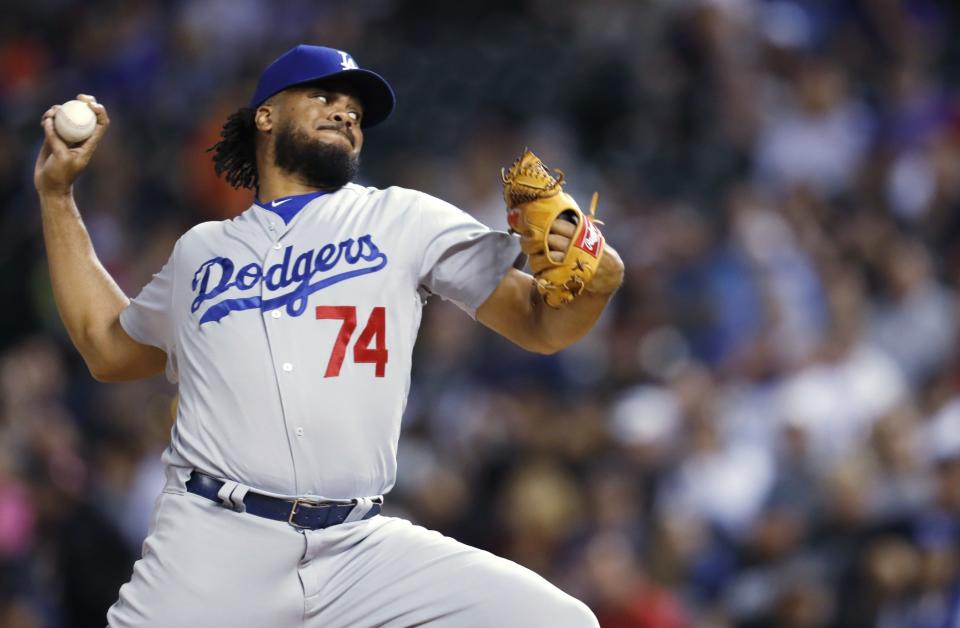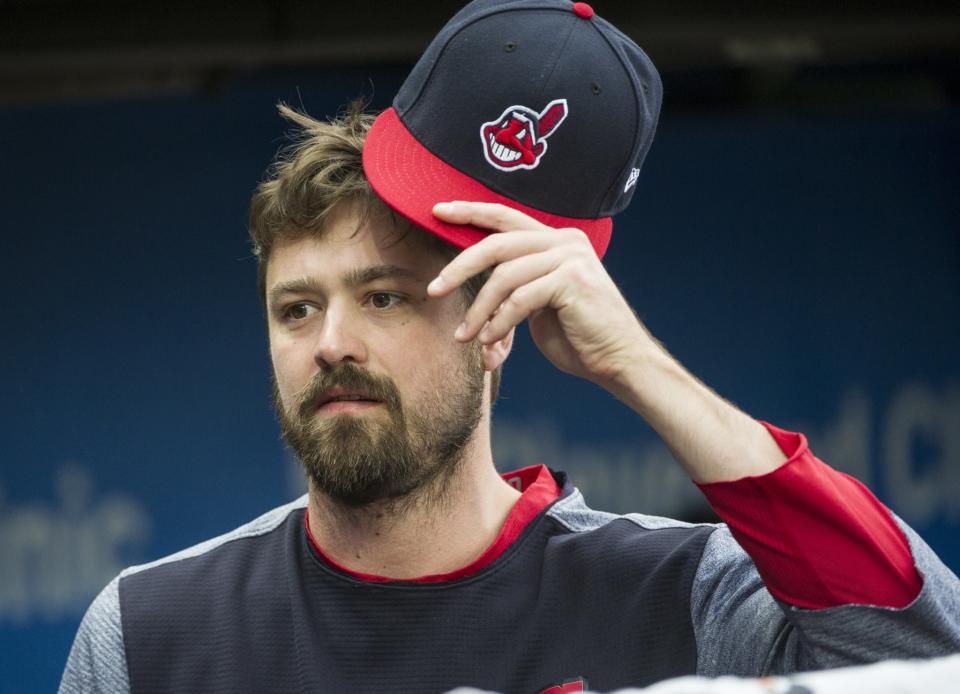The night Kenley Jansen went from a good pitcher to a great one
Kenley Jansen was a good pitcher. A good closer. Nothing wrong with Kenley Jansen. You could win a lot of games with Kenley Jansen in the ninth inning, and the Los Angeles Dodgers did.
Then, more happened. Game 5 of the NLDS happened, and that’s when Kenley Jansen discovered he could be great, that it was in him to pitch on the edge of elimination, of fatigue, of regret, of brilliance, of all that stuff that scares the regular guys a little. That he was OK with that. In fact, it rather thrilled him.
The night of Oct. 13. Washington D.C. An inning, then two, and into a third. Walks happened. Baserunners. A hit. Fifty-one pitches came and went, and then big ol’ Kenley came off the field last October in a puddle of sweat and satisfaction.
“I never thought I could be on that level,” Jansen said this week, “and I did it.”

He sat on the floor in a hallway beneath Nationals Park that night, a party raging in the next room over, his eyes half closed. He celebrated the self-discovery, happy just to listen in on the joy from down the hall, to be alone in all that. It was, turned out, not only the moment Jansen believed launched him to a more special career (and a five-year, $80 million contract), but the last time – as of Tuesday – he issued so much as a walk.
The Eckersley-ian numbers going on three months into his eighth big-league season:
• 15 saves in 15 opportunities, 4-0 record
• 29 2/3 innings, 17 hits, 0.91 ERA, 0.573 WHIP
• 50 strikeouts, 0 walks
• 15.2 strikeouts per nine
• .160 batting average against
• 107 batters faced, 6 three-ball counts
• One immaculate inning – one inning, three batters, three strikeouts, nine pitches

This, with one pitch, the cutter, along with a slider the other 4 or 5 percent of the time. Same fire-breathing velocity. Same intent. Lots of Mariano Rivera videos later, one career transforming game later, something … better.
“I learned how to pitch here,” said Jansen, the former catcher who’d cut his teeth on all of about 60 minor-league innings. “It took me some time to find myself, to learn who I am.
“I’m more focused now on that one hitter. That one pitch. Like, what is the meaning behind this pitch?”
So he was asked if he thought he could go an entire season without walking a batter. He laughed. He shrugged. Because mid-June without a walk by itself is madness. Because he wouldn’t entirely dismiss the idea of three more months of the same.
“I just go day by day, man,” he said. “I’ll just keep attacking. At the end of the year, if it’s zero [walks] or one or two, three four, we’ll see.”
***
The one notion that was lost in the Andrew Miller phenomenon of last October – best reliever pitches when and where there is the most trouble, and so is not tied to the ninth inning – is there are few pitchers like Andrew Miller, and even Andrew Miller has a limit.
In a six-month season, just about every night brings hard, late decisions, brings those “high-leverage” moments everyone likes to talk about, and if you’re not careful, well, we’ll let Terry Francona take it from there.
“I don’t think Andrew ever got overexposed, I think I pitched him too much,” Francona told the Cleveland Plain Dealer. “I was talking about that the other day. You don’t ever see an ERA next to my name, but I should have got a couple of his runs.
“I was bothered by that last week. I shouldn’t have done that. We say it all the time. We want our guys to pitch as much as possible, but not too much. That one outing was too much.”

It’s June and the Cleveland Indians and Andrew Miller had seen one or two high-leverages too many, the result being five runs and two losses to the Dodgers spread over about 24 hours in the middle of last week, along with four appearances over six days, entering anywhere from the sixth to the eighth innings.
Miller is exceptional, but even he wobbled under the load, and this is why – sometimes – what looks great in October can undermine an entire bullpen in June.
The solution? Francona has temporarily swapped the roles of Miller and regular closer Cody Allen. That means regular work for Miller but, perhaps, fewer four-alarm jams and multiple-inning slogs. He’ll be fine, and good on Francona for recognizing even Miller has his boundaries.
***WHAT ELSE:
If we’re losing our minds over Anthony Rizzo barreling into Austin Hedges on Monday night, then that means the Posey Rule is working, because a few years ago you wouldn’t have thought twice about that play. You’re asking Rizzo to determine which way Hedges is going to go with that ball, when Hedges probably doesn’t know himself until it happens, and as it turns out both of them end up in between. As the focus on that rule fades, catchers routinely are setting up in front of the plate without the ball, and baserunners routinely are choosing to slide anyway, and the outrage arrives when the game is played the way it should be played, the way the rule is written. It stinks that Hedges was hurt. But that’s not the point, which is that Rizzo wanted to score, and Hedges didn’t want him to, and the result was the result.
Don’t know what the Pittsburgh Pirates have in mind, and don’t know what they’ll look like in a month, but teams have an eye on Gerrit Cole heading into the trading deadline. He’s enduring a mercurial first half in which he’s already allowed 16 home runs, but his velocity is good and his walks are down and he’s still Gerrit Cole.
***INCOMING:
Pillow fight by the Bay.
Not all that long ago you might’ve found reasonable arguments for the New York Mets in the NL East and the San Francisco Giants in the NL West, except then they went ahead and played the games, and now look at them.
The Mets limped through three months on bad knees and backs and hamstrings and thumbs and shoulders and ERAs and crises. The dreams of keeping five starters healthy and productive have given way to the horrors of searching for one. Folks have even started – continued, maybe – to doubt the job security of Terry Collins, which is at best short-sighted and at worst ludicrous. But here we are.
The Giants trudge along a half step ahead of the Philadelphia Phillies and no one else, and there’s a handful of teams ahead of them hardly even trying to win. Mark Melancon, who was a solid bet to make the Giants viable in October, has a plus-5 ERA, Madison Bumgarner hasn’t thrown a pitch in two months and Bruce Bochy maybe wishes the rest of the rotation hadn’t either.
Anyway, they had to play sometime.
The probables:
Friday: Seth Lugo vs. Ty Blach
Saturday: Jacob deGrom vs. Johnny Cueto
Sunday: Zack Wheeler vs. Matt Moore

